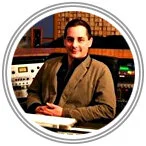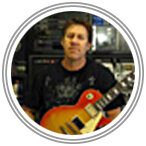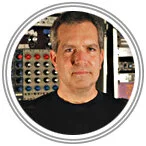The Reference in DAW Analog Summing
THE ORIGINAL SUMMING SOLUTION THAT IGNITED THE OUT-OF-BOX REVOLUTION.
Born out of real-world necessity, this tool, the first of its kind, was created to bring back the analog sound-quality, feel and headroom that were missing from the digital mixing environment, while maintaining the fast DAW workflow, editing and recall capabilities that we all depend on.
Through cutting-edge analog audio circuit design the 2-BUS allows the full potential of your studio to be realized–audibly, in terms of sound quality, spatial detail and headroom–and ergonomically in terms of outboard equipment integration in the mix process. Designed and built with the highest quality components and a no-compromise attitude, this pristine audio path delivers nuance, depth and clarity to your mix without any added coloration, and thus allows the true nature of your recorded tracks and outboard gear to shine.
Searching for punch? Extended soundstage? Definition? Headroom? The Dangerous 2-BUS 16X2 summing device puts that all back into a lifeless mix. Much like traditional vintage consoles brought together multiple channels of audio, the 2-BUS receives 16 analog outputs from any DAW interface and combines them to stereo. This is its sole purpose and it performs more transparently and musically than any other solution.
True summing devices have no individual volume controls, pan pots or aux sends. Those functions are performed by the recording software to leverage automation and recall on demand. Furthermore, running your audio through unneccesary electronics lowers performance.
The measure of a successful mix is consistency: will it translate across multiple mediums like the radio, an iPod, home hi-fi, a car stereo… Therefore, a summing solution must be transparent, yet musical to deliver. Only if and when color is desired, then outboard may be called upon for this purpose.
The Dangerous Music 2-BUS leverages decades of collective experience from the world’s premier mix engineers to guarantee results.
You will hear the difference.
FEATURES
Massive Punch and Detail
Clear Stereo Imaging
Incredible Headroom
Effortless Outboard Gear Integration
The Top Choice of Mix Engineers Worldwide
Unsurpassed Sonic Performance
Stepped Attenuator Volume Control
Custom Built Linear Power Supply
Hand Assembled in the USA
CHOOSING YOUR SUMMING AMP:
Since the creation of the Dangerous 2-BUS many manufacturers have released “summing box” products. Choosing one can be confusing, but if you ask 2 questions it becomes easy.
+ 1. IS IT REALLY A SUMMING AMPLIFIER, OR IS IT A LINE MIXER?
A true summing box designed to be a back-end for a DAW mixer will be “fixed gain and fixed pan,” because the fader and pan controls are in the DAW software mixer. You do not want to repeat these functions in the hardware domain because a) you lose your recall capabilities and b) you are running your audio through unnecessary electronics which will degrade the sound.
If it has pan pots and/or level controls on it, it is a line mixer, not a summing mixer, despite what the front panel might say. A line mixer is perfect if you need to sub-mix keyboards or a bunch of mic preamps to stereo, but is not the best option when mixing a track from your DAW.
+ 2. DO I WANT A CLEAN OR COLORED SIGNAL PATH FOR MY MIXING?
The short answer is you want options. Many manufacturers have a signature tonal coloration to their sound, incorporating components like transformers or tubes into the design. These components can sometimes shape the sound in a pleasing way, but you are stuck with that sound for everything you do. We chose to make the tone and color optional with the 2-BUS+ by designing three original analog color circuits that can be selected and adjusted as you need them. Suppose the transformer is great on one song but not right on another – you can simply disengage it with the press of a single button. Or suppose you like the harmonic stimulation, but want less of it. Other summing amps do not have this option; they hold you hostage to a single sound.
A true mastering-style summing amp will let all of what you recorded come through into a clean, high-headroom environment for the summing process. We at Dangerous have a deep background in designing and building mastering consoles and monitor controllers. With our approach to summing you can insert color where, when and how you choose with the onboard processors in the 2-BUS+, or with outboard gear and plugins. All options remain open, the best of all worlds.
+ A NOTE ON PASSIVE SUMMING:
There are two types of passive summing devices: powered and non-powered. Non-powered summing amps simply employ a resistor network feeding a pair of busses. This process by its nature loses a considerable amount of level, requiring a high-gain amplifier (microphone preamplifier) to bring it back up to usable line level. Non-powered boxes require the user to insert a separate outboard mic pre for this makeup gain.
Other products have the amplifier built in, appearing on the outside like an active summing device but in fact employ the same non-powered summing as described above. You can often tell when non-powered summing is being used by a high input channel count (32 or 48 inputs) because the parts cost only pennies, as opposed to having expensive active receiver amplifiers on every input.
We have found through years of experience and testing that this non-powered approach is not the ideal way to handle this task, and that an active design using balanced receiver amplifiers, summing op-amps and line drivers yields the most exceptional performance.
Not having an active balanced design creates several potential problems:
• A balanced receiver provides common mode rejection (CMR) while a passive resistor network does not. Good CMR is key to low noise performance.
• A balanced receiver allows isolation of the D/A converter’s ground from the audio ground of the summing amp – passive does not. This could lead to poor crosstalk rejection, which means poor imaging.
• Active design also allows for a local ground reference for the inputs, which is the same ground reference as the summing op-amp. All these things contribute to a clean, quiet, low-distortion device that is stable.
HOW IT WORKS
+ LEARN THE PROCESS
By routing individual mono tracks or panned stereo subgroups to the 2-BUS, you get the benefits of both analog tone and DAW automation. Route your elements out of the DAW via multiple converters, and build your mix from the ground up while listening through the 2-BUS. You will hear more detail, resulting in a better and faster mix.
The first thing you’ll need to do within your DAW is to set up multiple hardware outputs from your digital-to-analog (DA) converters, and lose your software Master Fader. Replace the Master Fader with a stereo Audio Track named 2-BUS Mix. (Eventually, before printing the various mixes or stems, you will rename the “2-BUS Mix” track to reflect the song title.) Patch the main output of the Dangerous 2-BUS (“D2B”) to a pair of analog-to-digital (AD) converters, i.e. Input 1-2, and set the input of “2-BUS Mix” to Input 1-2. Set this new stereo audio track to “input-monitor” so that you can hear the output of the D2B. This track is where you will record your mix.
Next you will need to route your individual tracks, returns and submixes to various DA outputs that are connected to the D2B’s 16 inputs. Prior to mixing OTB, all your outputs within the DAW were probably set to Output 1-2, but that will no longer be the case. Assigning multiple outputs allows you to take advantage of the D2B’s analog summing. Spreading your tracks across more DAs means that each DA has fewer elements to calculate, in layman’s terms ensuring that each instrument or vocal has maximum DA power available to it.
At this point, you are likely to hear some of the benefits of OTB analog summing, relative to digitally summing ITB. But you’ve only scratched the surface of the possibilities!
You can expand your mixing horizons by using a patchbay to integrate outboard gear as a non-destructive insert between the DA and the D2B inputs, as well as between the D2B Main Out and your mixdown destination, i.e. 2-BUS Mix.
We’ll illustrate two radically different stylistic approaches to routing. They are both equally valid, yet are capable of producing radically different aesthetic results. For the sake of simplicity, we’ll call the two approaches “Hi-Fi” and “Power” routing.
The following is an example of an effective “Hi-Fi” routing for modern mixes when using a single Dangerous 2-BUS:
- Kick Drum bus (mono)
- Snare Drum bus (mono)
- Drums bus (minus kick & snare) left
- Drums bus (minus kick & snare) right
- Bass bus (mono)
- Lead Vocal (mono)
- Background Vocals bus left
- Background Vocals bus right
- Guitar bus left
- Guitar bus right
- Keyboards bus left
- Keyboards bus right
- Horns & Strings bus left
- Horns & Strings bus right
- FX returns left
- FX returns right
You can further control the submixes by adding EQ and dynamics processing to the signal path in between the DA converters and the inputs to the 2-BUS.
Here’s a very basic example of an effective “Power” routing inspired by Michael Brauer’s “Multi-Bus” mixing technique. Even an eight-input mixer like the one on the Dangerous D-BOX can accommodate a simple, yet very powerful, version of this technique:
- 1-2. All Vocals stereo bus
- 3-4. All Bass & Drums stereo bus
- 5-6. All Guitars, Keyboards, Horns & Strings stereo bus
- 7-8. All FX stereo bus
- 9-10. available
- 11-12. available
- 13-14. available
- 15-16. available
The “power” of this particular routing is lies in the fact that you can easily “insert” stereo processing on each of the submixes in between the DA and the D2B. Thus you can optimize the processing for each group of vocals or instruments so that they will not be negatively influenced by the other groups.
Needless to say, you can mix and match the two routing approaches described above. Solve sonic problems or expand your creative horizons–the choice is yours.
Of course, you can adapt the routing to suit your needs, and you can seamlessly link any combination of up to eight 2-BUS or 2-BUS LT units to create a 128 in by 2 out analog summing mixer.
Documenting and precisely recalling your settings is a breeze, thanks to a stepped attenuator output control and colorfully illuminated “+6 dB” and “MONO” switches on the front panel.
+ WHY SHOULD YOU CARE ABOUT ANALOG SUMMING?
Mixing “in the box”–aka “ITB”–has been noted by many users as having apparent limitations, which are commonly described as “lack of headroom,” “poor spacial imaging,” “loss of low level detail,” and “inadequate preservation of transients.” Much like traditional consoles brought together multiple streams of audio from a multi-track tape machine, the 2-BUS receives 16 analog outputs from any audio interface and combines them to stereo. It performs this transparently, without transient suppressing or bandwidth limiting components in the signal path, and is tooled specifically for the DAW environment. By spreading the track load across multiple digital-to-analog (D/A) converters and summing them in the analog domain, the 2-BUS delivers mixes that sound and feel as if they were mixed on a large-format analog console, without all the drawbacks that come with owning a console.
The 2-BUS system allows you to spread your DAW’s workload across multiple D/A converters instead of using the internal stereo mix buss of the DAW (master fader.) Whether or not you choose to integrate analog outboard gear, this process distributes the workload over multiple converters, enabling each D/A or stereo pair of D/A’s to dedicate its full potential to a single track or instrument, or a subgroup of just a few tracks. The final, ciritical step of summing to stereo occurs in the 2-BUS’ high-headroom analog environment as opposed to occurring digitally in a computer. Transparent mastering-quality design and components preserve transient response and allow the artist or engineer to choose when, where, and how to color any individual track, stereo pair, or the entire mix with selected outboard gear without clouding the issue. If the summing amp itself has a lot of tonal coloration it is inherently limiting to the creative process, because if the color is not right for a particular project or song you cannot take it off. In short, the Dangerous 2-BUS is the right choice for you if you want to retain the purest, undistorted transient response, clarity and dynamics from your recording while maintaining the fast DAW workflow and recall capabilities required by today’s mix specialists.
+ WHEN IS A “SUMMING BOX” NOT A SUMMING BOX?
The difference between a true summing device (or summing amplifier if you prefer) and a line mixer is that a summing device is designed as a true back-end for a DAW software mixer. It performs one very essential function: summing multiple channels of audio to stereo. A line mixer or console on the other hand performs several tasks- summing, level balancing (faders), spatial placement (panners), and aux routing of tracks. To put it simply, if it has a level control and/or a panner on the inputs it is a line mixer, not a summing amplifier. These functions are already happening in the DAW, so repeating them in the hardware domain on the back-end is detrimental for 2 primary reasons-
- Instant Recall capability is lost.
- Running your audio through unnecessary components compromises the signal path.
For these reasons, Dangerous summing amplifiers are the ideal devices for incorporating this hybrid process into your setup, whether it is a home/project studio, a travel rig, or a Grammy winning multi-room facility.
+ WHY DO THE BEST MIXING ENGINEERS CHOOSE DANGEROUS SUMMING?
Top remixers like Junior Sanchez, Producers like Duncan Sheik, Charlie Peacock and Billy Mohler, and Platinum mix engineers such as David Kahne, Richie Biggs, and Michael James have told us that they rely on Dangerous summing as an integral part of their studios because it helps them “work faster, get better sounding mixes, easily integrate analog outboard gear without latency or extra A/D/A conversions, and improve workflow efficiency.” Although they have very different approaches to creating world-class tracks, the 2-BUS is flexible enough to integrate seamlessly into each of their workflows: Kahne daisy-chains four units for a 64 x 2 mixer, with all his DAW outputs and his analog outboard gear permanently normaled together; James uses 2-BUSSES for pristine “uncolored” submixes that pass through analog processing en route to the final stereo mix. Sheik prefers the 2-BUS for it’s transparency and its ability to let him work rapidly, and Mohler finally has the bass response he’s been looking for with his D-BOX’s eight channels of summing. Whatever the scope of your needs, we have the right tools for you.
All summing mixers are not created equal. The Dangerous 2-Bus was the first and is still the best at what it does: restoring nuance, depth and clarity to your mix without leaving a heavy sonic thumbprint. The 2-BUS LT and D-BOX carry on the legacy using the same great design and components with different feature sets to serve your personal needs and your budget.
SPECS
Frequency Response: 1 Hz-100 kHz within 0.1 dB
Total Harmonic Distortion:
0.0045% +4 dBu input level
0.0008% +22 dBu input level
Intermodulation Distortion:
0.0055% +4 dBu input level
0.0015% +22 dBu input level
Crosstalk:
> 101 dBu
Noise floor:
<-83 dBu total energy in audio band
Max level:
+28 dBu
Nominal operating level:
+4 dBu (1.228 volts)
Input impedance:
25kohm balanced
Output impedance:
50 ohms balanced (600 ohm drive capable)
Gain accuracy:
>0.02 dB @ 1 kHz for any gain setting
Power consumption:
30 watts
DOWNLOADS
MANUALS
OTHER
SETUP DIAGRAMS
Warranty:
Free 2 year extended warranty with online registration.
Standard Warranty:
90 days parts and labor, subject to inspection. Does not include damage incurred through abusive operation or modifications/attempted repair by unauthorized technicians.
TESTIMONIALS
JEFF ANDERSON • EQ MAGAZINE
“The improvement in imaging… with the 2-BUS… made the mix sound not only bigger, but more professional.”
RYAN GREENE • PRODUCER/ENGINEER
“Because of the stem mixing for video games I was doing, I tried the Dangerous 2-BUS, and my large format analog console went away very quickly after that!”
REUVEN • MIX ENGINEER
“I love the low end, it’s very unique the way the low end flows —amazing. The stereo image is wider on the 2-BUS too. Over the years I would sometimes try out other summing boxes to see what happened, but always came back to the 2-BUS.”
BARRY RUDOLPH • MIX MAGAZINE
“Mixing down a stereo pair [on the 2-BUS]…you’ll have more headroom and dynamic range, a wider stereo spread and clearer sound…than mixing inside Pro Tools.”
DAVID KAHNE • PRODUCER/MIX ENGINEER
“Dangerous was the first…with summing…they’re still the best. Completely transparent, more headroom, no color or distortion.”
DAVID MINEHAN • GUITARIST FOR THE REPLACEMENTS, PRODUCER AT WOOLY MAMMOTH SOUND
“I use my 2-BUS every day and get great results and compliments on the final mixes.”
JACQUIRE KING • PRODUCER/MIX ENGINEER
“The 2-BUS is the sonic equivalent of a large format analog console.”
NOËL JACKSON • MASTERING ENGINEER
“Control of the final summing process lets me deliver better mastering results. I love all the Dangerous Music equipment.”












